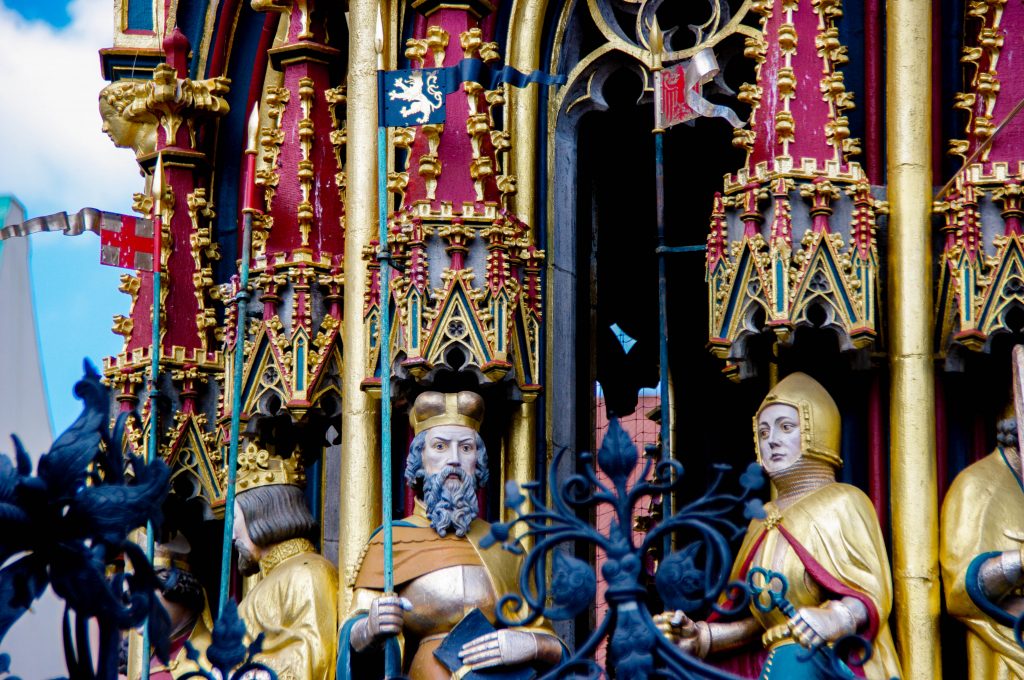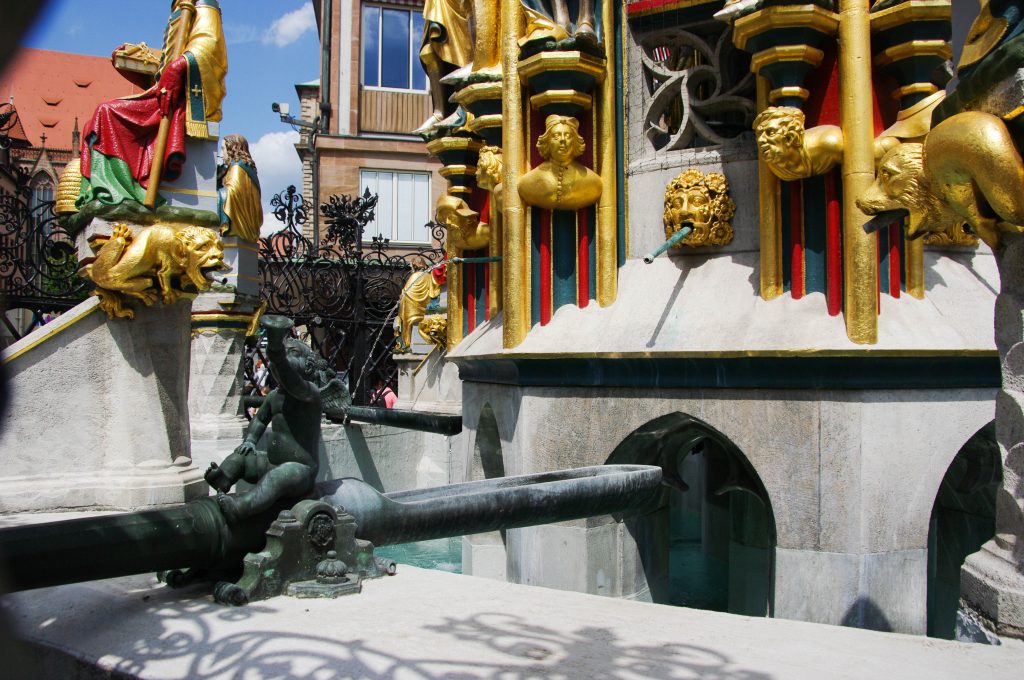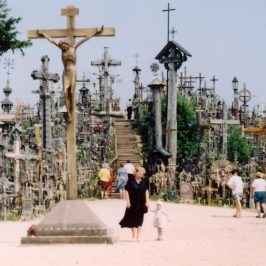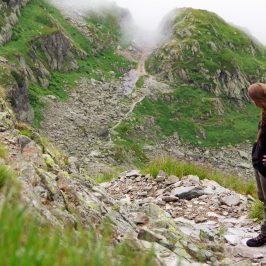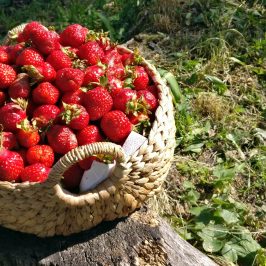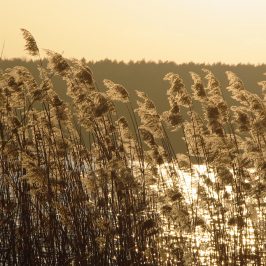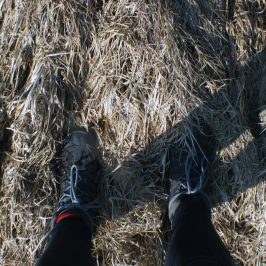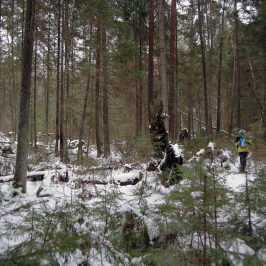When the summer days were still incredibly hot and long, we decided to roast ourselves a little bit more and see the south. There was no real plan included, no booked places or activities, just an Interrail ticket in our pockets and huge backpacks on our backs.
It was important that this year we kept our no flying streak, so we planned mainly to use local public transportation and hitchhiking. This way we wanted to explore more remote and unique areas, rather than moving from one tourist trap to another. To start the exploration from ‘our own backyard’, we decided to make Nürnberg our first stop. In middle ages city was a center of culture, trade and politics; today, even if the city was heavily bombed, it surprises the visitors by rich and beautiful massive old town, as well as old and impressive castle on the top of the hill.
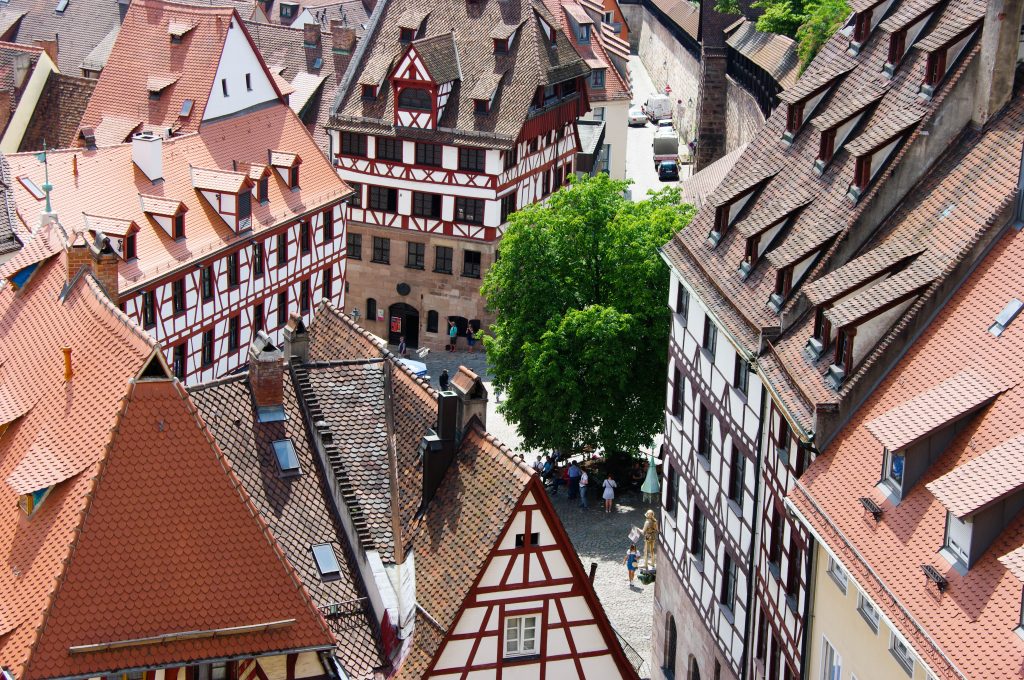
Besides cute German style white houses with dark wood lines (the ones that Americans love) the other interesting attraction was the old fountain – Schöner Brunnen. Although it is not as hot of a tourist attraction as former Nazi sites and most of the people pass over it without a longer consideration, I found it to be a rather fascinating structure. This 14th century craftsmanship survived until today only because it was hidden during the WWII. It reflects not only the finery of the art and symbolism back then, but also the worldview of Roman Empire: it pictures not only religious figures but also prince-electors and philosophers. There are also several legends about the fountain.
Our quick tour was ended by climbing to the Nürnberg castle, which provided not only the view of the cities skyline, but also an informative museum about the regional history. Built in middle ages, this sturdy castle served as a seat of kings and Roman emperors until it lost its importance during the 30 years war. During the latest world war it was destroyed to ruins and restoration until the present state took over 40 years.
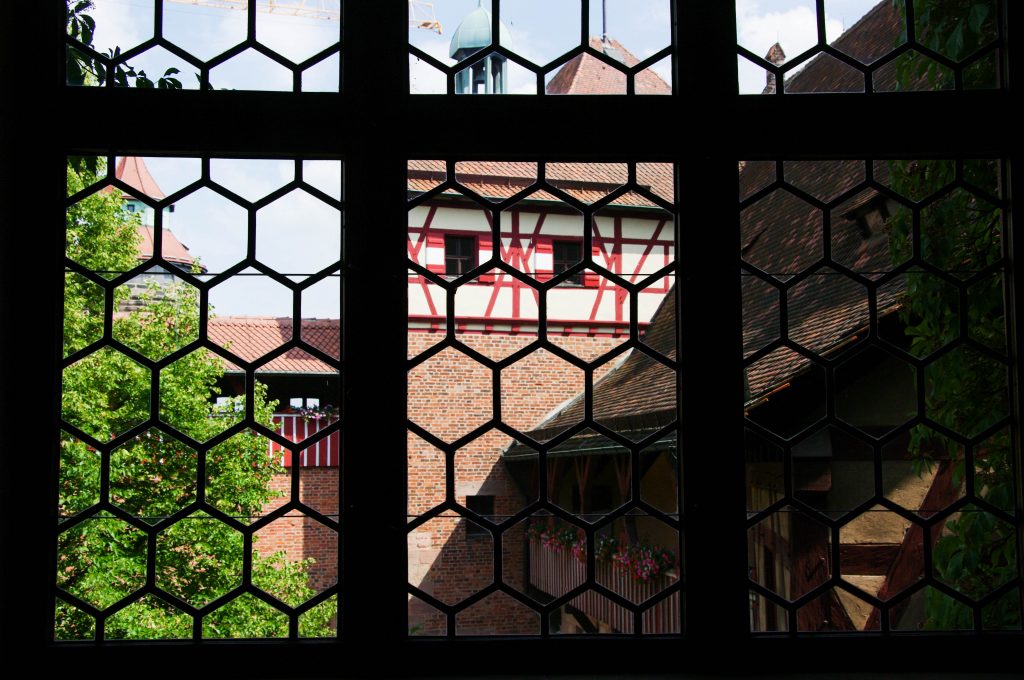
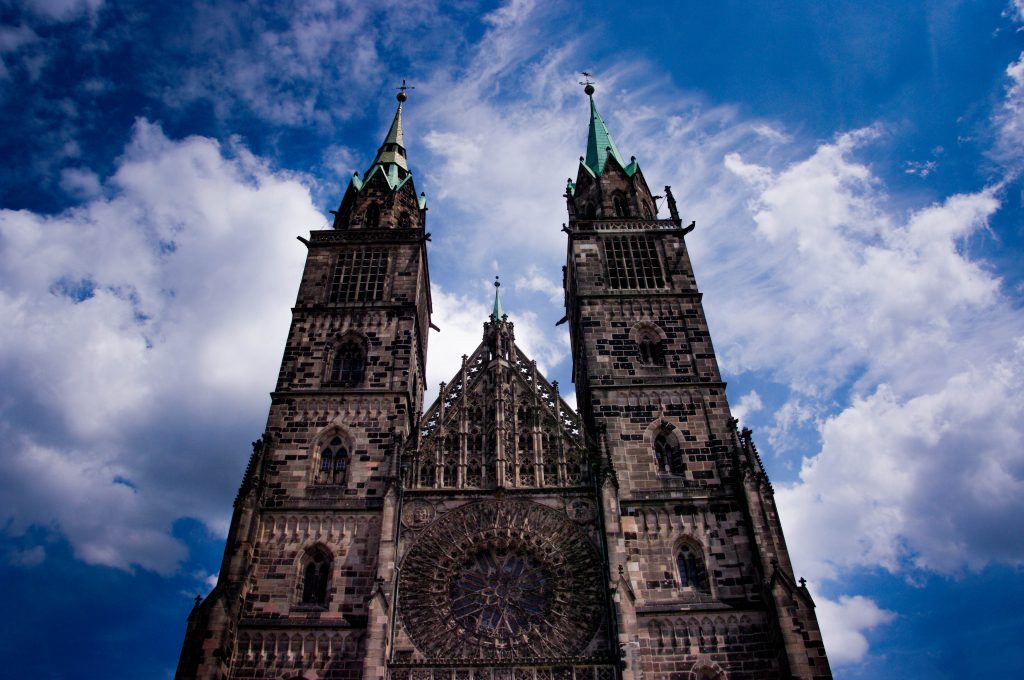
To be honest, we did not plan to stay long in the city and the road turn inwards Bavarian wilderness. The next day we got a canoe offer from our friends and there we were already floating on the Vils river.
The start was decided to be in Schmidmühlen, where Vils is still a small and not more than knee deep. It started with a little bit of fast water but nothing really dangerous. It seems to be the best start as upriver from this point is too dangerous for inexperienced paddlers (us), the water is narrow there and is surrounded by cliffs, coming close to each other.
The problem with this trip was that we had to figure out how to come back to the car, as it is a linear route. We decided to always have one person on bike following the canoe by car. It was a peaceful and sunny day, river followed the fields and hills of Bavaria. It was so unbelievably remote, as I imagined Bavaria to be very crowded. The right side of the flow was extremely empty, as I have learned later on, it is a military zone, and not a small one.
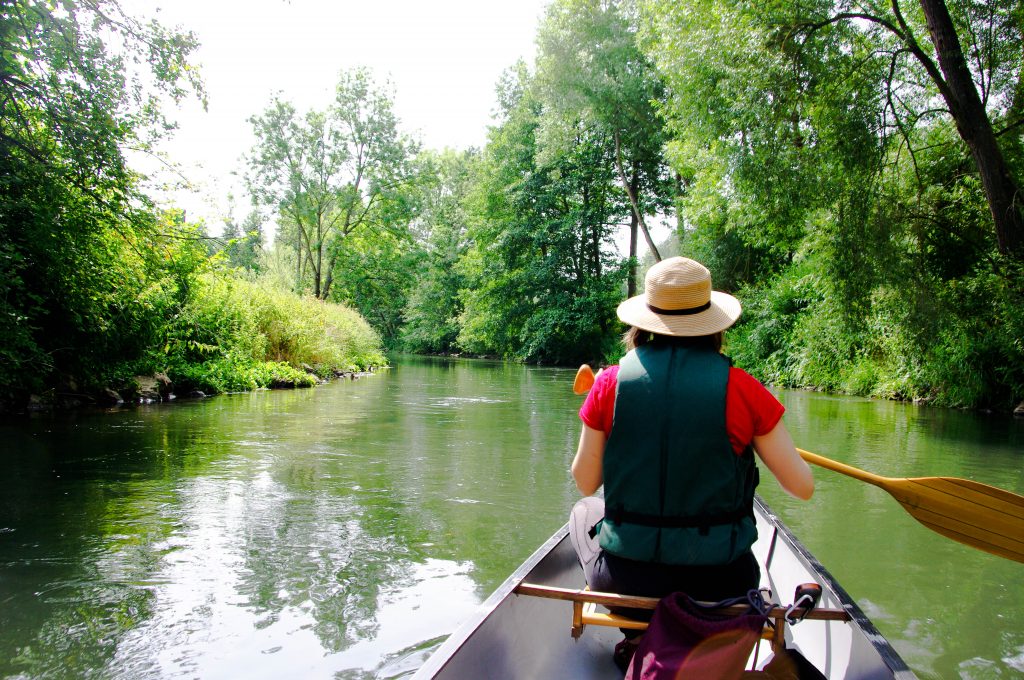
The interesting fact about the zone, that we have heard from local friends, is that there is another one about 40km North. Both of them are taking a massive land space for short distance missile shooting tests/practice and were established by American army after WW2, as they controlled this region after Germany’s surrender. Basically they sit and shoot at each other missiles during the broad day light. I thought it was very curious, as former US bases are being abandoned and dismantled across the country (some of them used for housing later on, as Germany has a massive living space shortage), but these two are actively operating. We even heard some shooting while kayaking next to it.

On the map, these two suspiciously uncharted regions are the US military bases. Vils river flows a great deal at the border of the zone, which gave its peace and worries. Belonging to military this land piece looked wild at the border, yet many signs informed that stepping there might be the last idea of your life (or at least a very bad one).
It was a nice and easy river, getting rapidly wider and deeper as it approached its joining to Naab. The route had its wild moments as well as some cute villages where we stopped for a break or boat transportation over the man-made obstacles. It was a relatively dry summer in Germany, so the water levels at some wider spots dropped drastically and several times we had to walk besides the kayak. Yet, once we saw a fallen tree over the water, blocking the way completely, we decided that this time we can jump over it and that it was enough water to not the stuck. We were also a little bit too lazy to carry the kayak around, but never mind. So we gained some speed and tried our best and of course it did not work. The boat got stock on the tree trunk (that would not have been a problem with higher water) at the first third of the boat.
And then the game started. Tried to move back. No luck. Tried to move forward. No luck. paddling was not strong enough. Pushing from the tree itself did not help. Jumping and leaping forwards as well. One could have went out of the canoe but it was pretty deep and the water was not clear – could have been dangerous branches or other sharp thing underneath. Everything we tried seemed to not work. The trunk we were stuck on was right under my butt, so I moved to the very front of the kayak, but this alone did not help. We both had to move to the very front. It was a challenge to relocate ourselves without ending up in the river and once we were there, we still had to ridiculously try to jump by jerking our weight forward.
The kayak started to move, yet it was very small distances. We had to continue it for at least 10 min until we were floating again. The worst part, that our friend saw everything from a bridge nearby, as we were planning to finish the last piece of the river all together.
We planned and finished our journey where Vils meets Naab – in Kallmünz. There we had some fast water and some paddling against the Naab, in order to safely land on the side, we wanted and needed. After securing the kayak on the car roof we went for a local sight-seeing. This tiny town hold a beautiful medieval old town and castle ruins. The hill did not look so big from the river, yet climbing it proved to be not so easy. The old-town was sitting on its side and the tiny pass-ways might not always lead where the castle is. The terrain is too steep for cars so it provided a calm stair climbing event until we reached the castle path.
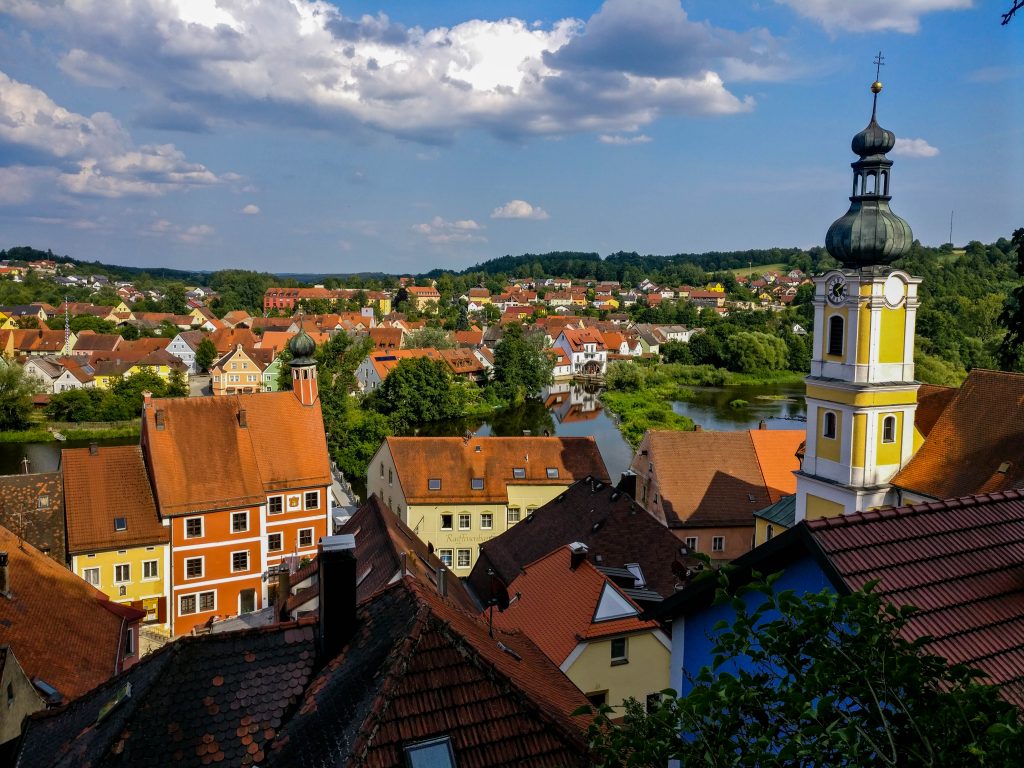
Once atop the view is far and incredible. The beauty of the settlement and the fields around it, same as the rivers crossing the hilly terrain made a big impression on me. Kallmünz used to be an art colony, where a lot of artists would come to relax, practice and meet same minded and it was not without a reason – the scenery is indeed gorgeous.
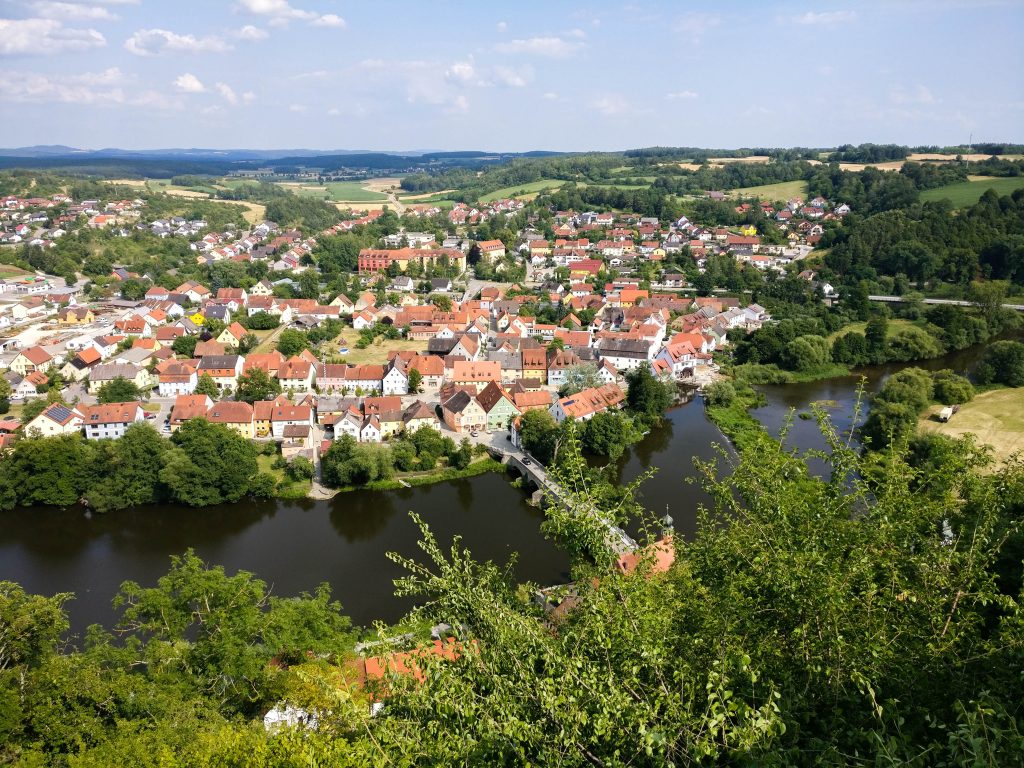
The whole region is perfect for castle hoppers. It is possible to visit at least one a day without a bigger trouble. Before leaving to our another stop – Regensburg – we managed to quickly hike to the Wolfstein castle ruins next to the Neumarkt in der Oberpfalz. It was a beautiful spot to catch the last sun of the day and enjoy another beautiful view. We also learned the Celtic tribes had big settlement here and even flattened some hills for better protection and visibility.
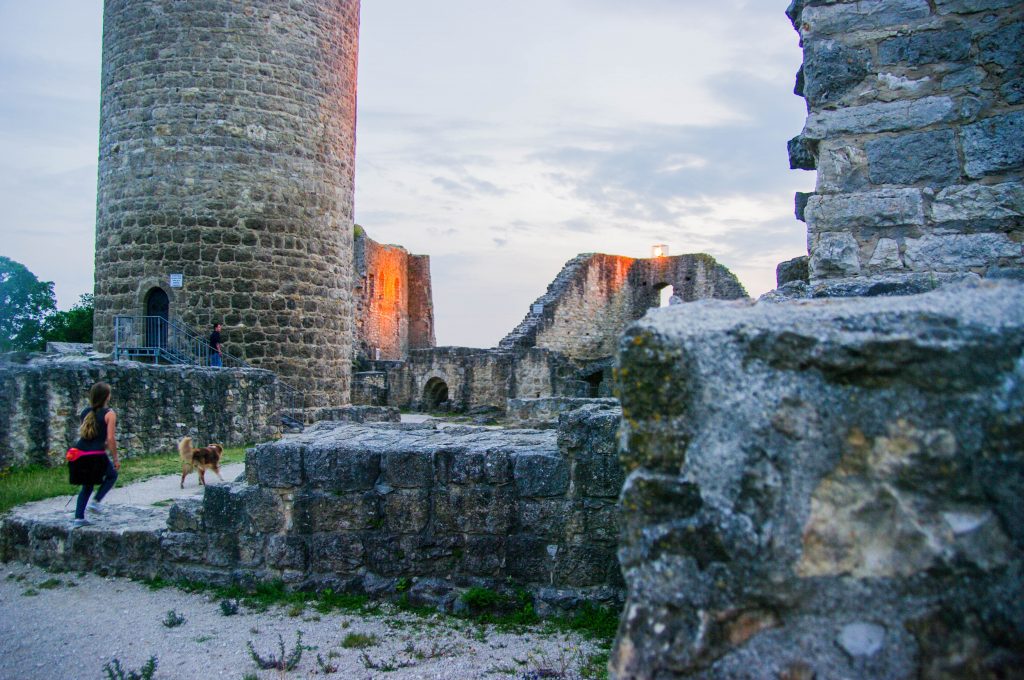
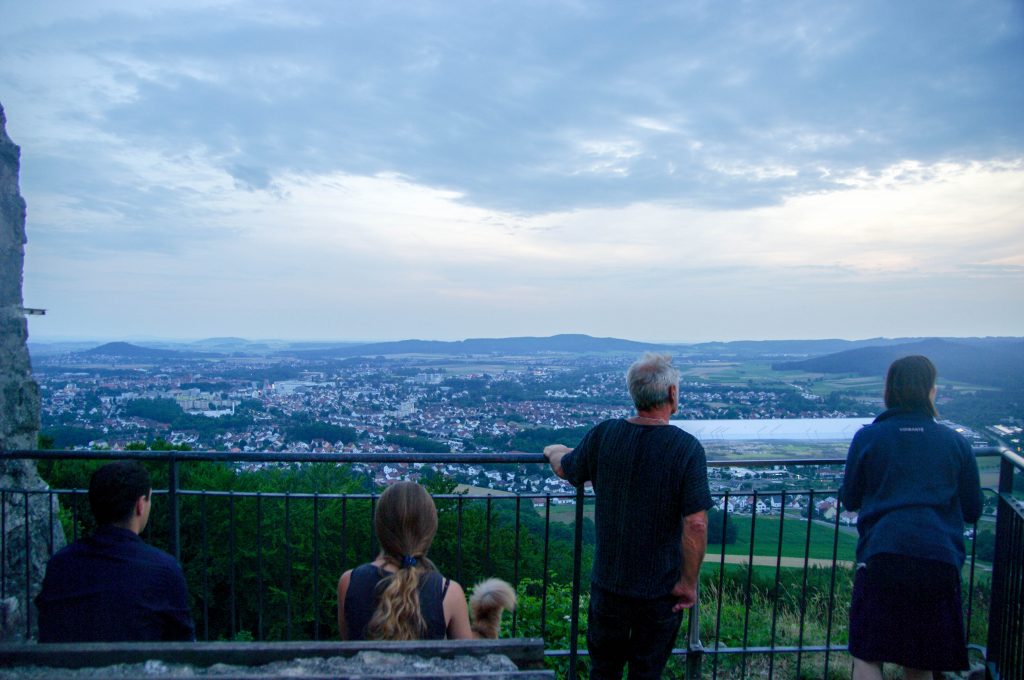
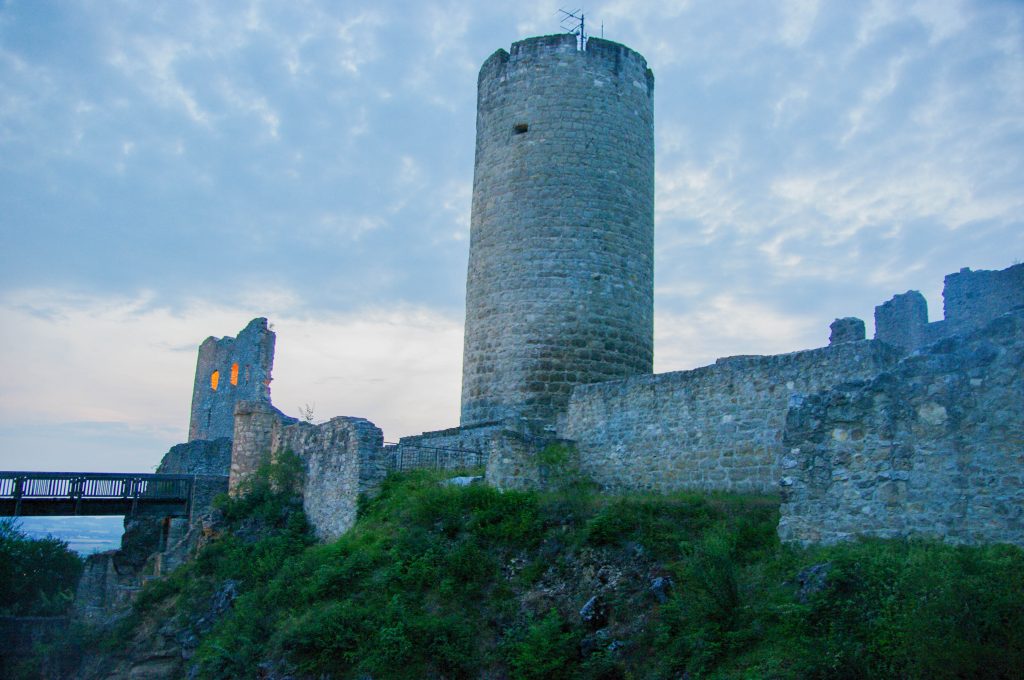
A massive castle is now being slowly restored but the entrance remains open 24/7, which makes it a wonderful place for evening walks and night star gazing. As it is not on the main touristic route, you most likely will spare yourself the frustration of tourist masses, which is another reason to take your kayak and explore the unknown side of Bayern!
Powered by Wikiloc

